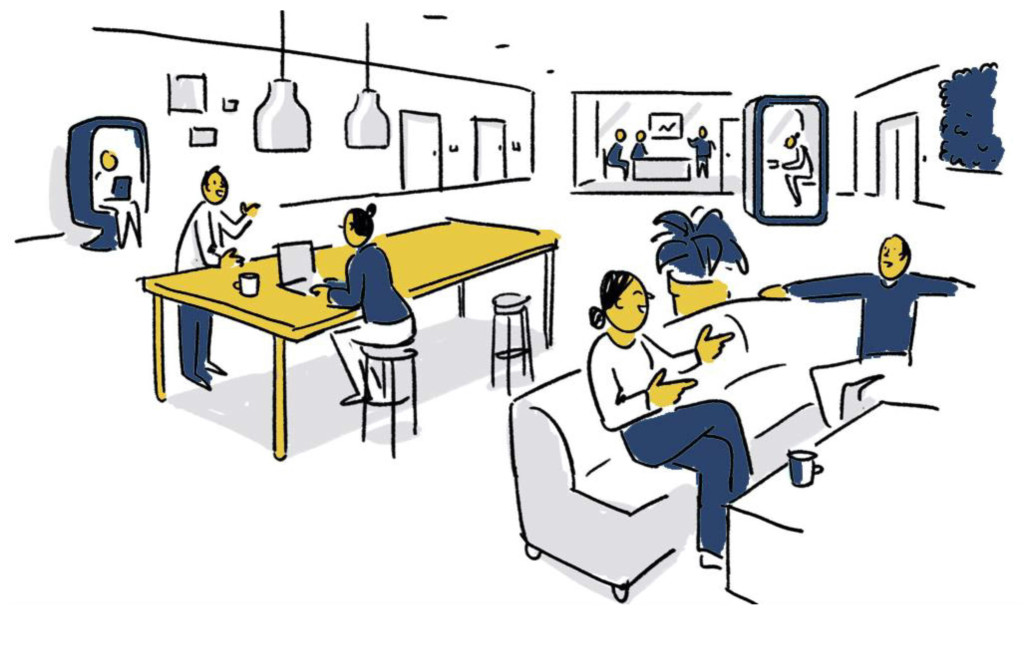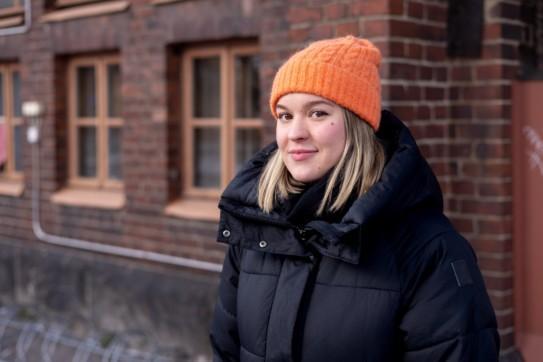User-centric Concept Design supports investment in the renewal of business premises.
Over the decades, our customer's premises have undergone a major transformation from a slaughterhouse to office space. Despite several renovations, the premises no longer serve the needs of its users and the changing working life. Our user-oriented study project provided design guides and budget calculations for three different design options.

Year: 2022
Service: Architectural Concept Design, User-centric Design
From a slaughterhouse to an office
The Client’s premises originally served as a slaughterhouse and have been renovated several times over the years. After the renovation in the 1990s, an extension has also been added to the building. Despite several renovations, the Client is once again in a situation where the premises no longer serve their purpose.
We set out to find out whether it would be enough to renovate the current premises or whether it would be more sensible to demolish them completely and design new ones to replace them. The result of the study project was three alternative plans, which we also calculated budgets for to support decision-making.
User focused project assessment
Before starting the design, we interviewed the users of the premises about their experiences, wishes and observations. For example, the need for a quiet working space was raised, as well as a space that increases the sense of community where people could do more relaxed work with a group. This reflects well the changed needs of working life, and, for example, the demands brought about by hybrid work.
It is important to consult the users of the space before planning. They have first-hand knowledge of what works and what doesn’t. They also have valuable tacit information about the root causes of functionality and inaction, which can be revealed through interviews. For example, hypothesis images can be used to support the interviews, in which the interviewees are presented with possible spatial solutions.
Based on the interviews, we created written design guides that guide the development of the premises in the future.
Three different plans
We developed three design solutions for the Client.
In the first option, the spatial diagram according to the design guides was adapted to the base of the existing office premises. This would require the least amount of construction work, but the premises also impose restrictions on designing.
In the second plan, a new extension would be built to replace the current extension to better meet the wishes of users. Even in this option, most of the existing building could be utilized.
The third option is to build a completely new office building and demolish the old one. In the new building, the premises could be fully tailored to the needs of the users, and, for example, the sound insulation desired by the users would be easy to implement. The new building could be located on the existing plot and the old premises could be used as temporary facilities until the new building is completed. This would minimize disruption to employees caused by modifications.
User-centric is sustainable.
Our user-centric project helped the Client to find out thoroughly whether the current premises could still be utilized and whether it was more economically viable to renovate or build new. It is also more ecological and resource-wise to design premises according to use and avoid, for example, building spaces that are too large.
The value of user consideration is greater than the original price tag of a user-centric project. User-centric design creates flexibility and long-sightedness: for example, the requirements of hybrid work and team growth can be better considered when users have been listened to in the design phase. Considering the users also increases employee satisfaction and thus scores a point for the employer.

Architecht:
Inkeri Kankkunen
Read more
Shopping center Pasaati: versatile and long-term design work
Shopping center Pasaati in the center of Kotka has been serving its customers for almost 20 years. We continue to act as the design partner of the shopping center and ensure that the facilities adapt to the changing needs of stores and customers.
Shopping center Pasaati: versatile and long-term design workLaitila Architects helps Hyphen localise their designs for Finnish environment
Our localisation services helped global architecture firm Hyphen provide their American client with designs that suit the Finnish climate and comply with local legislation.
Laitila Architects helps Hyphen localise their designs for Finnish environmentThe upgrades of Original Sokos Hotels in Kotka and Kouvola were carried out with customer experience and adaptability in mind.
We have planned several expansion and renovation projects in the hotel and restaurant facilities of Original Sokos Hotel Vaakuna in Kouvola and Original Sokos Hotel Seurahuone in Kotka. At the same time, we have gained an understanding of the special characteristics of hotel projects.
The upgrades of Original Sokos Hotels in Kotka and Kouvola were carried out with customer experience and adaptability in mind.